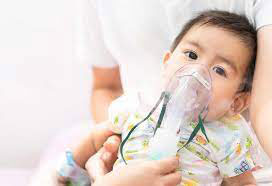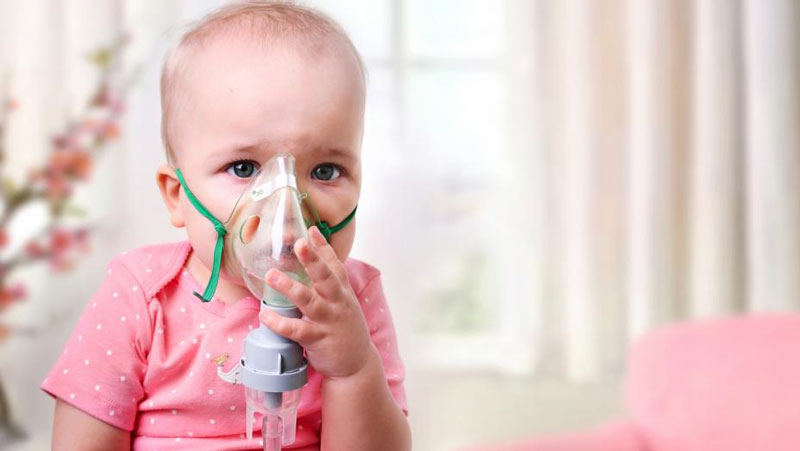What Is RSV?
Jan 06, 2024
Respiratory Syncytial Virus (RSV) is one of the most widespread and extremely contagious viruses that attack the respiratory tracts of many children before their 2nd birthday. It is just the appearance of a cold for most infants and toddlers. But in a small portion of people, the infection caused by RSV can cause serious, life-threatening issues like bronchiolitis or pneumonia, which is an inflammation that affects the smaller airways in the lung.
What Causes RSV?
RSV can be transmitted by contact with someone affected by the secretions of coughing, sneezing, or touching objects like doorknobs or toys that carry the virus. It can take anywhere between 2 and 8 days after the moment that someone is exposed to get sick. The symptoms typically last from up to seven days, and it's at the time when those who are infected are most likely to spread the virus. The peak time to contract RSV disease across the United States is fall through the spring.
Who Is at Risk for RSV?
Most children get RSV at the age of two due to interactions with other children. Being in areas crowded with others who could be infected or being exposed to siblings or children that may be infected are all common ways to pick the virus. People who are at a higher chance of RSV becoming serious or life-threatening include:
Children and infants born prematurely suffer from lung or congenital heart illness, weak immune systems, or suffer from neuromuscular diseases. Older adults suffer from heart or lung diseases such as asthma, congestive heart failure, or chronic obstructive respiratory disease (COPD). People who suffer from immunodeficiency, for example, recipients of organ transplants and chemotherapy patients, as well as HIV/AIDS sufferers.
How Is Respiratory Syncytial Virus Diagnosed?
Health professionals usually detect the respiratory syncytial virus by conducting a medical history and examination. Most healthy children are not required to be able to distinguish RSV from the common cold. If a child suffers from additional health issues or severe symptoms, they may need to establish an RSV diagnosis. In such a scenario, the virus can be detected by analyzing nasal fluids. The samples are collected using a cotton swab or suction using the bulb syringe.
Can Respiratory Syncytial Virus Be Prevented?
Because RSV can easily be spread through contact with infected individuals and surfaces, washing your hands regularly and frequently can end the spread. Clean your hands after you've been near someone with cold-like symptoms. Children in school suffering from a cold should stay off their younger siblings, particularly babies until the symptoms subside.
To avoid serious respiratory illness, at-risk children can receive a monthly dose of a drug containing RSV antibodies during the peak RSV season (roughly November through April here in the U.S.). The shield it offers doesn't last for long, however. Therefore, they'll require injections every RSV year until they're longer at the highest risk of getting serious RSV infection. Talk to your doctor about whether your child is high-risk.

Important Points to Remember Concerning RSV in Children
RSV is a viral disease that causes breathing difficulties. It is most common in the winter and early spring months. Many babies have been infected at most once before they reach the age of 2. Babies may also be re-infected by the virus. The infection can occur at any time throughout life. Treatment for RSV could include additional oxygen. It is a form of oxygen administered via nasal prongs and air tents. If a child is extremely sick might need to be placed on an oxygen machine (ventilator) to aid in breathing.
RSV can lead to serious respiratory illness and pneumonia for babies at high risk. It could be life-threatening. RSV in a newborn baby could be connected to asthma later in the child's years. Children at risk of RSV have been prescribed a medication called palivizumab. Consult your child's doctor about whether your child is at the highest risk of RSV.
What Is The Prevalence of Respiratory Syncytial Viruses (RSV)?
The majority of children contract RSV before the age of two years ago. It is easy to spread the virus among infants due to their frequent contact with other children who might be infected through sharing their toys and the constant contact with objects that the disease might infect. About 57,000 children younger than five require hospitalization for RSV every year in the U.S. Adults, approximately 177,000 older adults are admitted to hospitals yearly due to RSV. Around 14,000 individuals die from this disease every year.






